This is a list of notable organizations related to beer:

The Campaign for Real Ale (CAMRA) is an independent voluntary consumer organisation headquartered in St Albans, England, which promotes what they designate as "real" ale, "real" cider, "real" perry and traditional British pubs and clubs. With just under 160,000 members, it is the largest single-issue consumer group in the UK, and is a founding member of the European Beer Consumers Union (EBCU).

A craft brewery or microbrewery is a brewery that produces small amounts of beer, typically less than large breweries, and is often independently owned. Such breweries are generally perceived and marketed as having an emphasis on enthusiasm, new flavours, and varied brewing techniques.

India pale ale (IPA) is a hoppy beer style within the broader category of pale ale.

Beer in the United States is manufactured by more than 7,000 breweries, which range in size from industry giants to brew pubs and microbreweries. The United States produced 196 million barrels (23.0 GL) of beer in 2012, and consumes roughly 28 US gallons (110 L) of beer per capita annually. In 2011, the United States was ranked fifteenth in the world in per capita consumption, while total consumption was second only to China.
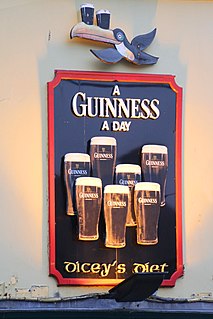
Brewing in Ireland has a long history. Production currently stands at over 8 million hectolitres, and approximately half the alcohol consumed is beer.
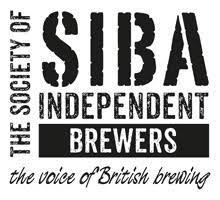
The Society of Independent Brewers is an organization representing the interests of independent breweries in the UK. Founded in 1980, it was intended to fight the pub-tie system, under which large brewers owned 80% of the UK's pubs. It changed its name in 1995 to reflect the changing aspirations of its members, but retained its original acronym.

Beer is the most popular alcoholic drink in New Zealand, accounting for 63% of available alcohol for sale. At around 64.7 litres per person per annum, New Zealand is ranked 27th in global beer consumption per capita. The vast majority of beer produced in New Zealand is a type of lager, either pale or amber in colour, and typically 4–5% alcohol by volume.

Beer in the Netherlands includes pale lagers, especially Bavaria, Heineken and Grolsch, that are consumed globally. Heineken is the world's second-largest brewer of beer, after Anheuser-Busch InBev, since the latter acquired competitor SABMiller in 2016. Bavaria is the leading import lager in Iraq. The brewery is active in more than 130 countries, in particular in Asia and the Middle East.
This article is about the main brands of beer produced and served in Romania, also revolving around the history of this beverage on the territory of the Romanian lands, since at least the times of the Romanian Old Kingdom to contemporary times. The hereby article also focuses on the local breweries and craft beers.
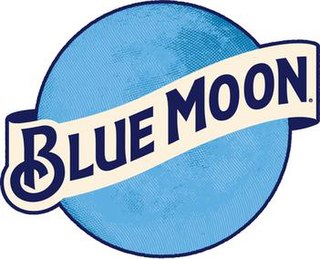
Blue Moon Belgian White is a Belgian-style witbier brewed by MillerCoors under the name the Blue Moon Brewing Co. It was launched in 1995, and was originally brewed in Golden, Colorado.

Beer is one of the oldest drinks humans have produced. The first chemically confirmed barley beer dates back to the 5th millennium BC in modern-day Iran, and was recorded in the written history of ancient Egypt and Mesopotamia and spread throughout the world.

Beer in the United Kingdom has a long history, and has quite distinct traditions. Historically the main styles were top-fermented Bitters, Porters, Stouts and Milds, but after World War II lagers took over half the market by volume. The Campaign for Real Ale (CAMRA) was founded in 1971 and has encouraged the preservation and revival of traditional styles of ale. In particular CAMRA has promoted cask conditioned beer, which completes its maturation in casks in the cellar of the pub rather than at the brewery. As of 2014 the UK drank 634 million imperial pints of cask ale, representing 60% of ale in pubs and restaurants and 17% of all beer in pubs. In total 42.42 million hectolitres of beer were produced in 2013 of which 48% was sold in the off-trade.
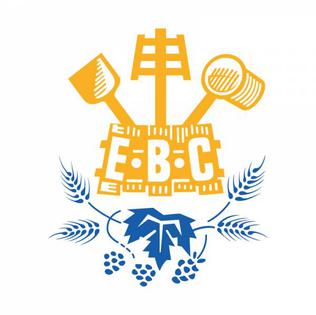
The European Brewery Convention (EBC) is an organisation representing the technical and scientific interests of the brewing sector in Europe. The EBC defines itself as the scientific and technological arm of The Brewers of Europe. Among brewers, EBC is perhaps best known for the EBC units measuring beer and wort colour, as well as EBC units for quantifying turbidity in beer. Equally, the EBC congress is recognised globally as a significant meeting event for the world's brewing, malting and beer fermentation scientists and technologists, taking place every two years.
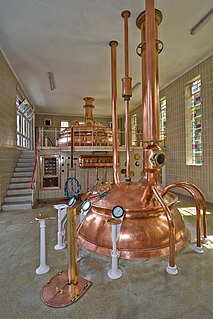
A brewery or brewing company is a business that makes and sells beer. The place at which beer is commercially made is either called a brewery or a beerhouse, where distinct sets of brewing equipment are called plant. The commercial brewing of beer has taken place since at least 2500 BC; in ancient Mesopotamia, brewers derived social sanction and divine protection from the goddess Ninkasi. Brewing was initially a cottage industry, with production taking place at home; by the ninth century, monasteries and farms would produce beer on a larger scale, selling the excess; and by the eleventh and twelfth centuries larger, dedicated breweries with eight to ten workers were being built.
InBev is a brewing company that resulted from the merger between Belgium-based company Interbrew and Brazilian brewer AmBev which took place in 2004. It existed independently until the acquisition of Anheuser-Busch in 2008, which formed Anheuser-Busch InBev. InBev had operations in over 30 countries and sales in over 130 countries. In 2006, it had a market capitalization of €30.6 billion and net profit of €3.2 billion on sales of €13.3 billion.

Beer has been produced in Scotland for about 5,000 years. The Celtic tradition of using bittering herbs in brewing remained in Scotland longer than in the rest of Europe. Most breweries developed in the central Lowlands, which also contained the main centres of population. Edinburgh and Alloa in particular became noted centres for the export of beer around the world. By the end of the 20th century, small breweries had sprung up all over Scotland.
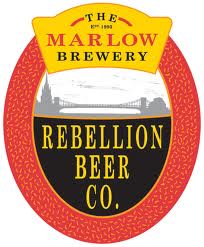
The Rebellion Beer Company in Marlow Bottom, Buckinghamshire, England is a microbrewery that produces regular and seasonal beers. It uses the chalky water of the local Chiltern Hills, which has high levels of minerals and salts.
Craft Brew Alliance is a beer brewing company that originally was composed of five beer and cider brands:

Brewing began in Sri Lanka in 1881 primarily to meet the needs of the colonial tea planters. Despite the country's tropical weather, the preferred beer styles have remained relatively unchanged, with strong stouts remaining popular.
Beer in Northern Ireland has been influenced by immigration into Ulster, especially from Scotland, and the drinking habits in Ireland until the partition of Ireland. Whiskey drinking was always a tradition with Guinness from Dublin being a strong influence in the style of beer drunk in the 19th and 20th centuries. Brewing traditions almost ceased to exist as smaller breweries closed, or were taken over, and then the large breweries in turn closed down their facilities. The Campaign for Real Ale (CAMRA) was founded in 1971; however, it was 10 years before the first new brewery, Hilden Brewing, opened its doors.